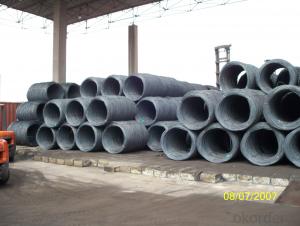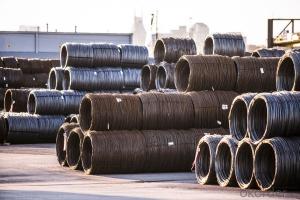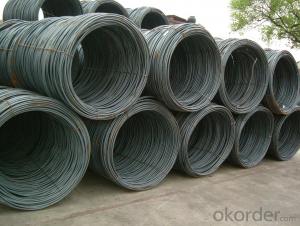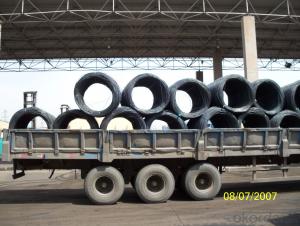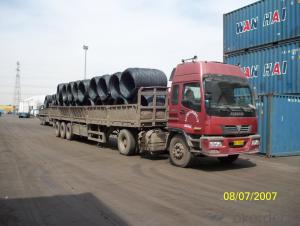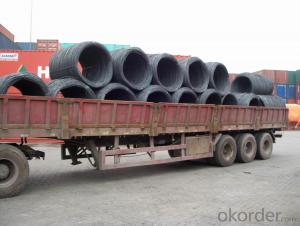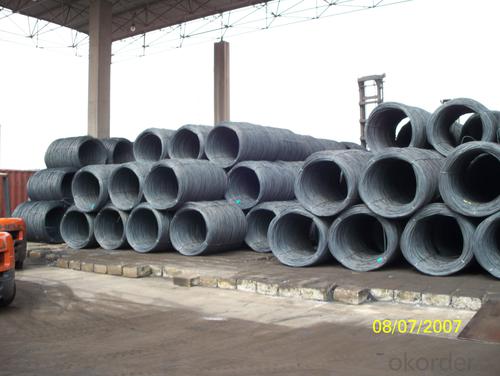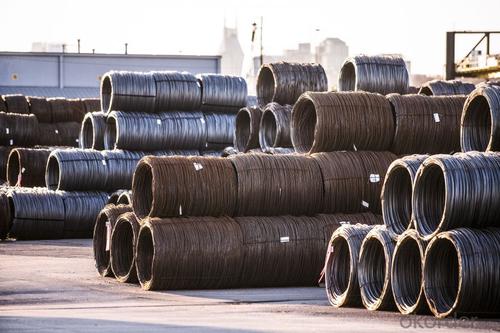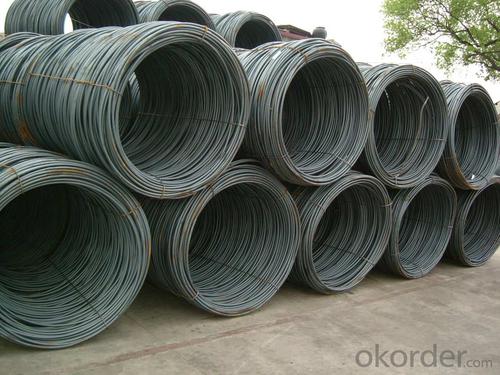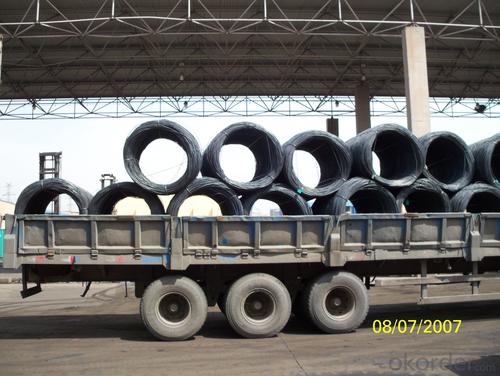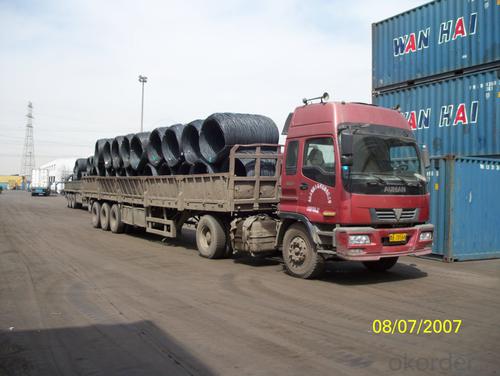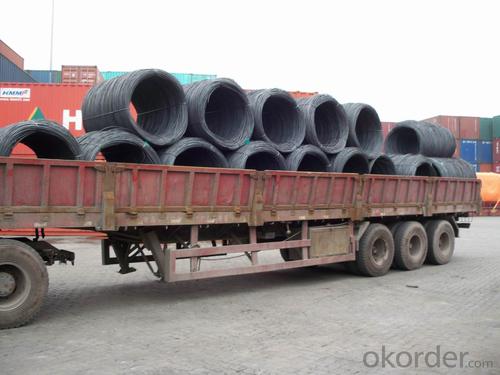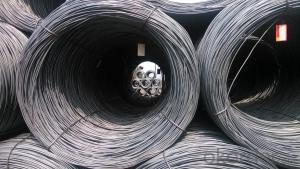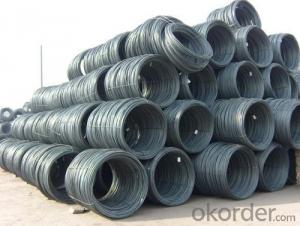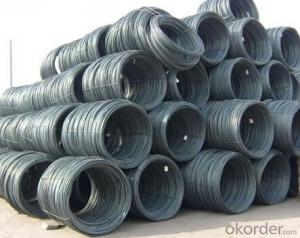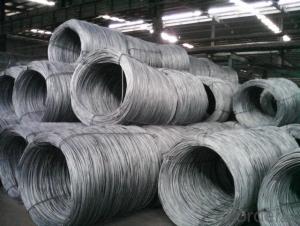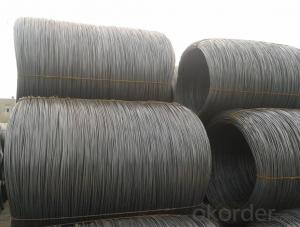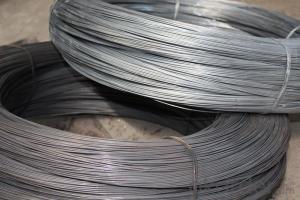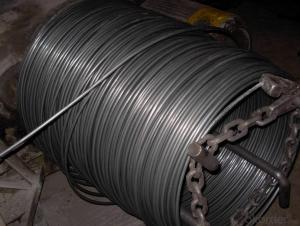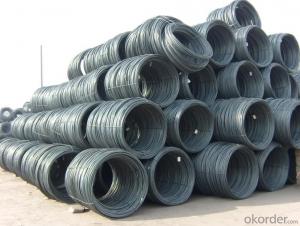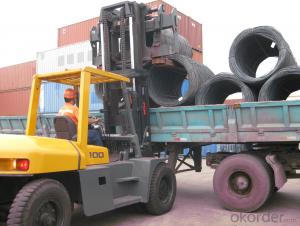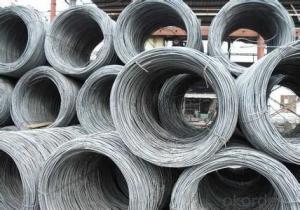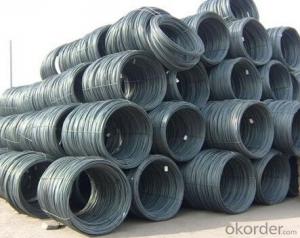SAE1006Cr Carbon Steel Wire Rod 6mm for Welding
- Loading Port:
- Shanghai
- Payment Terms:
- TT OR LC
- Min Order Qty:
- 100 m.t
- Supply Capability:
- 30000 m.t/month
OKorder Service Pledge
OKorder Financial Service
You Might Also Like
Specification
Description of SAE1006Cr Carbon Steel Wire Rod 6mm for Welding:
OKorder is offering Color Coated Steel Coil Prepainted Steel Coil at great prices with worldwide shipping. Our supplier is a world-class manufacturer of steel, with our products utilized the world over. OKorder annually supplies products to European, North American and Asian markets. We provide quotations within 24 hours of receiving an inquiry and guarantee competitive prices.
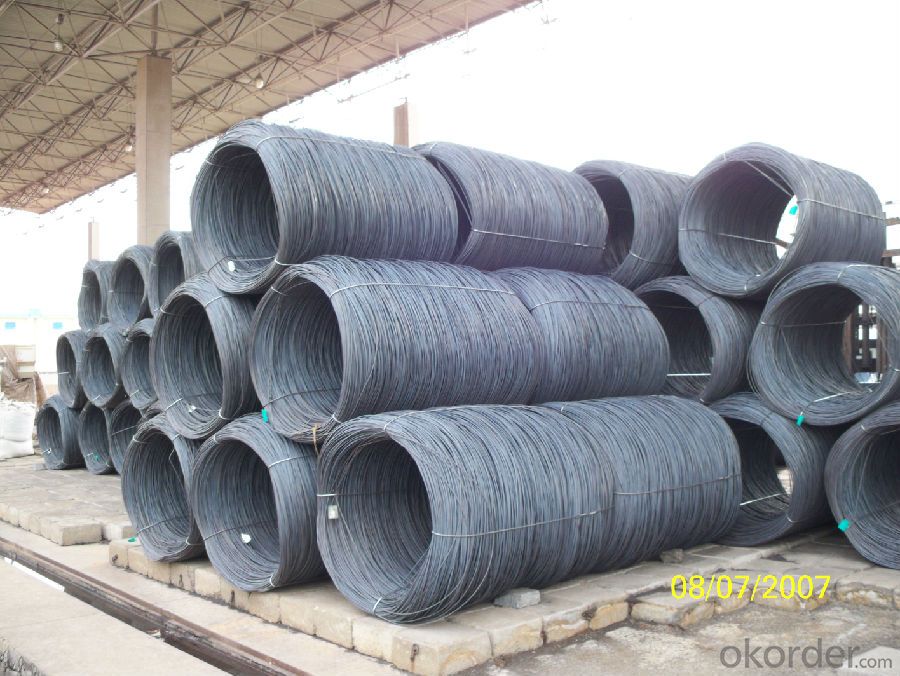
Applications of SAE1006Cr Carbon Steel Wire Rod 6mm for Welding:
Color Coated Steel Coil Prepainted Steel Coil are ideal for structural applications and are widely used in the construction of buildings and bridges, and the manufacturing, petrochemical, and transportation industries.
Main Product Features of SAE1006Cr Carbon Steel Wire Rod 6mm for Welding:
· Premium quality
· Prompt delivery & seaworthy packing (30 days after receiving deposit)
· Corrosion resistance
· Can be recycled and reused
· Mill test certification
· Professional Service
· Competitive pricing
Specifications of SAE1006Cr Carbon Steel Wire Rod 6mm for Welding:
PPGI:
1, Introduction: Color coated steel coils(sheets), i. E. PPGI, also called prepainted steel coils(sheets), are made of galvanized steel coils(sheets) with polymer coatings as surface. It's a new enclosure material and building board with characteristics of light-weighted, heat preserved&insulated, easily installed with bright colors.
2, Production Process: Pretreatment(Degreasing)_Drying_Chromating_Paint Basic Oil_Cooling_Drying_Color Coating_Cooling_Film-covering_Rolling Up
3, Characteristics:
Good at corrosion resistence. Besides zinc coating of the basic plate of galvanized steel sheet, the color coating as the surface has double lifetime to ensure better anticorrosion effect.
With excellent cold bending molded manufacturablity, PPGI products can be processed or directly used as final product. As being light-weighted and conveniently transported, they're widly used to replace wood to save energy.
There're thousands of colors can be chosen as per different application. Any color plays well in decoration.
No pollution with high recycling rate, PPGI coils and sheets are strongly recommended as enviroment-friendly products by the government.
5, eye bands and 4 circumferential bands in steel, galvanized metal fluted rings on inner and outer edges, galvanized.
| commodity | SAE1006Cr Carbon Steel Wire Rod 6mm for Welding |
| Techinical Standard: | JIS G3302-1998, EN10142/10137, ASTM A755 |
| grade | Q195,Q215,Q235,SAE1006,SAE1008 SAE1006Cr |
| Types: | Mesh welding |
| Base metal | galvanized, galvalume, cold rolled steel |
| Thickness | 0.14-1.0mm(0.16-0.8mm is the most advantage thickness) |
| Width | 610/724/820/914/1000/1200/1219/1220/1250mm |
| Type of coating: | PE, SMP, PVDF |
| Zinc coating | Z60-150g/m2 or AZ40-100g/m2 |
| Top painting: | 5 mic. Primer + 15 mc. R. M. P. |
| Back painting: | 5-7 mic. EP |
| Color: | According to RAL standard |
| ID coil | 508mm610mm |
| Coil weight: | 2--3MT |
| Package: | Properly packed for ocean freight exportation in 20'containers |
| Application: | Industrial panels, roofing and siding for painting/automobile |
| Price terms | FOB, CFR, CIF |
| Payment terms | 20%TT in advance+80% TT or irrevocable 80%L/C at sight |
| delivery time | 25 days after recepit of 20% TT |
| Remarks | Insurance is all risks |
| MTC 3.1 will be handed on with shipping documents | |
| We accept SGS certificatation test |
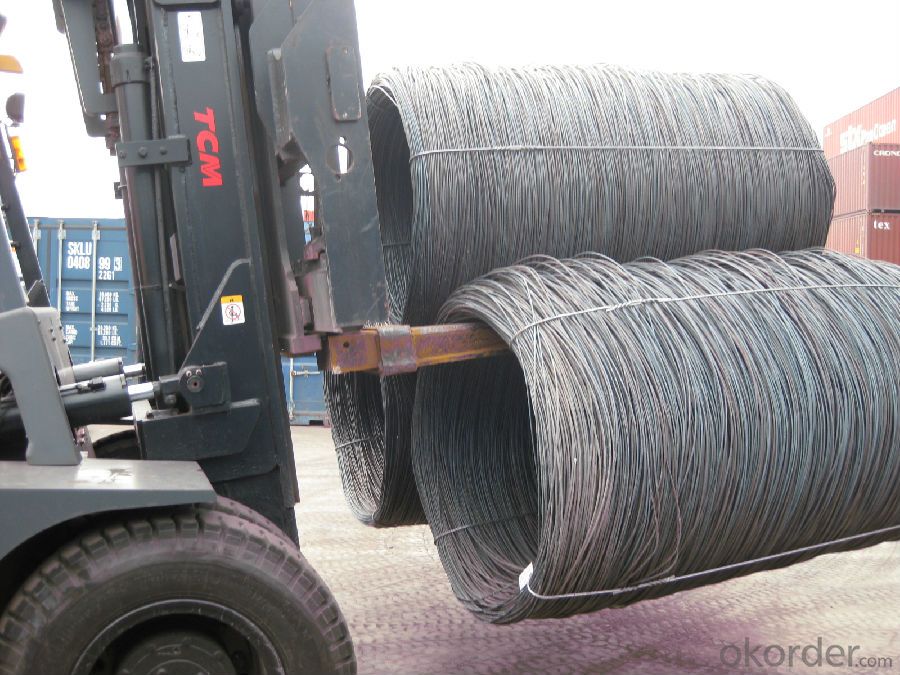
FAQ of SAE1006Cr Carbon Steel Wire Rod 6mm for Welding:
Q1: Why buy Materials & Equipment from OKorder.com?
A1: All products offered byOKorder.com are carefully selected from China's most reliable manufacturing enterprises. Through its ISO certifications, OKorder.com adheres to the highest standards and a commitment to supply chain safety and customer satisfaction.
Q2: How do we guarantee the quality of our products?
A2: We have established an advanced quality management system which conducts strict quality tests at every step, from raw materials to the final product. At the same time, we provide extensive follow-up service assurances as required.
Q3: How soon can we receive the product after purchase?
A3: Within three days of placing an order, we will begin production. The specific shipping date is dependent upon international and government factors, but is typically 7 to 10 workdays.
Q4: What makes stainless steel stainless?
A4: Stainless steel must contain at least 10.5 % chromium. It is this element that reacts with the oxygen in the air to form a complex chrome-oxide surface layer that is invisible but strong enough to prevent further oxygen from "staining" (rusting) the surface. Higher levels of chromium and the addition of other alloying elements such as nickel and molybdenum enhance this surface layer and improve the corrosion resistance of the stainless material.
Q5: Can stainless steel rust?
A5: Stainless does not "rust" as you think of regular steel rusting with a red oxide on the surface that flakes off. If you see red rust it is probably due to some iron particles that have contaminated the surface of the stainless steel and it is these iron particles that are rusting. Look at the source of the rusting and see if you can remove it from the surface.
- Q: What are the different surface defects that can impact the electrical resistance of steel wire rod?
- Some common surface defects that can impact the electrical resistance of steel wire rod include scale, rust, pits, scratches, and uneven surfaces. These defects can create barriers to the flow of electricity, leading to increased resistance and potentially affecting the wire rod's performance in electrical applications.
- Q: How is the diameter of a steel wire rod determined?
- The diameter of a steel wire rod is typically determined using a measuring instrument, such as a micrometer or caliper, which allows for precise measurements. The instrument is applied to the wire rod at multiple points along its length, and the average diameter is calculated based on these measurements.
- Q: What are the different mechanical properties of steel wire rod?
- The different mechanical properties of steel wire rod include strength, elasticity, ductility, toughness, and hardness. These properties determine the wire rod's ability to withstand applied forces, resist deformation, exhibit flexibility, absorb energy, and resist wear and indentation, respectively.
- Q: What are the common applications of pre-stressed concrete steel wire rod?
- Pre-stressed concrete steel wire rods are commonly used in various construction applications such as bridges, dams, parking structures, and high-rise buildings. They are used to reinforce and strengthen concrete structures, increasing their load-carrying capacity and durability. Additionally, pre-stressed concrete steel wire rods are also utilized in the construction of railway sleepers, poles, and other infrastructure projects.
- Q: What are the different types of steel wire rod coatings used for improved ductility?
- Some of the different types of steel wire rod coatings used for improved ductility include phosphate coatings, zinc coatings, and polymer coatings. These coatings enhance the flexibility and malleability of the steel wire rod, making it more pliable and less prone to cracking or breaking.
- Q: What are the main factors affecting the machinability of steel wire rod?
- The main factors affecting the machinability of steel wire rod include the composition of the steel, its hardness, the presence of impurities and inclusions, the surface finish of the wire rod, and the cutting tool material and geometry.
- Q: What are the main factors influencing the choice of steel wire rod order invoicing process?
- The main factors influencing the choice of steel wire rod order invoicing process are efficiency, accuracy, and customer preference. Efficiency is a crucial factor as it directly impacts the time and resources required to process and generate invoices for steel wire rod orders. Companies in the steel industry need to consider the speed and automation of the invoicing process to ensure timely and seamless delivery of invoices to customers. This may involve using software or systems that can automatically generate invoices based on order details, reducing the need for manual data entry and minimizing the chances of errors or delays. Accuracy is another important factor as it ensures that the invoices accurately reflect the quantities, prices, and terms agreed upon in the order. Invoices that are incorrect or contain discrepancies can lead to disputes and delays in payment processing. Therefore, the invoicing process should incorporate mechanisms to verify and cross-check the order details to maintain accuracy. Customer preference also plays a significant role in determining the invoicing process. Different customers may have different requirements or preferences for how they receive and process invoices. Some may prefer digital invoices sent via email or electronic data interchange (EDI), while others may still prefer physical copies sent through mail or courier. Companies need to understand and accommodate these preferences to ensure customer satisfaction and facilitate smooth payment processing. Additionally, factors such as regulatory compliance, data security, and integration with existing systems may also influence the choice of steel wire rod order invoicing process. Companies need to adhere to legal and regulatory requirements related to invoicing and ensure the security and privacy of customer data. Integration with existing systems, such as enterprise resource planning (ERP) or customer relationship management (CRM) software, can also streamline the invoicing process and enhance overall efficiency. In conclusion, the main factors influencing the choice of steel wire rod order invoicing process are efficiency, accuracy, and customer preference. Companies need to consider these factors and select a process that optimizes these aspects while ensuring compliance and data security.
- Q: What are the common production processes for zinc-coated steel wire rod?
- The common production processes for zinc-coated steel wire rod include drawing, annealing, galvanizing, and cooling.
- Q: What are the major opportunities for companies in the steel wire rod market?
- Some major opportunities for companies in the steel wire rod market include expanding into emerging economies with growing construction and infrastructure sectors, diversifying product offerings to cater to various industries such as automotive and aerospace, embracing technological advancements to improve production efficiency and quality, and exploring sustainable practices to meet the growing demand for environmentally friendly steel products.
- Q: Round in high wire and ordinary line what is the difference?
- The universal wire and high speed wire are the wire rods (bars) of the rolling mechanism.High wire: refers to the use of high-speed torsion mill rolling wire rod. The rolling speed of 80-160 M / s, each weight (disc) in 1.8-2.5 tons, tolerance of high precision (up to 0.02mm), in the rolling process by adjusting the process parameters (especially in the cooling line) to ensure the different requirements for the product.
Send your message to us
SAE1006Cr Carbon Steel Wire Rod 6mm for Welding
- Loading Port:
- Shanghai
- Payment Terms:
- TT OR LC
- Min Order Qty:
- 100 m.t
- Supply Capability:
- 30000 m.t/month
OKorder Service Pledge
OKorder Financial Service
Similar products
Hot products
Hot Searches
Related keywords
